|
Loch Ness Monster - The legend of Loch Ness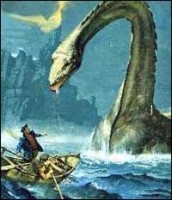
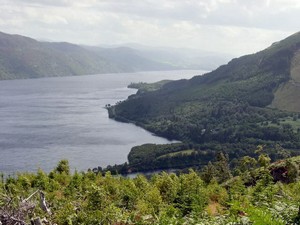
The Loch Ness monster was first noticed by the entire world in 1933 when on July 23rd "a most extraordinary form of animal" crossed the road in front of a car belonging to a man named George Spicer and his wife. The "extraordinary animal" had what they described as a "long and narrow neck that was slightly thicker than an elephant's trunk with a number of undulations in it, and a body about ten to twelve feet in length". They reported the animal as having lurched towards the loch, leaving no trace except a trail of broken undergrowth. The ensuing newspaper report made the first reference to a "monster" having been spotted near the loch. And so began the legend of the Loch Ness Monster, or Nessie as she is fondly called in Scotland...
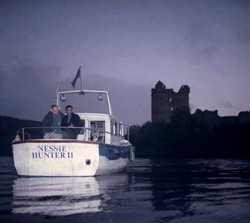
The very same year the "monster" was spotted again, this time by a young girl called Margaret Munro, who according to the reports, watched the creature out of the water this time, for about 20 minutes around 6.30 on the morning of 5th June. Her description was of a creature with an "elephant-like skin, a small head and two short forelegs - or flippers". Eventually the creature re-entered the water and disappeared. In August of that same year a man named Arthur Grant reported not only having seen, but having nearly hit the creature this time with his motorcyle. This allegedly happened around 1 a.m. on a moonlight night. Grant apparently got off his motorcycle and followed it to the loch, but after that he saw nothing but ripples. No more sightings were reported until 1945, when in May of that year, a man called C.B. Farrell of the Royal Observer Corps was interrupted from his watch by a sighting of the creature. According to his report he spotted the creature from a distance of about 250 yards and he described it as "a large-eyed finned creature about 20 to 30 feet in length whose neck protruded from the water about 4-5 feet". So what was it? The world wanted to know. Scientists were beginning to take notice and make plans. No longer just casual observers, the next observation was made by a fishing boat which observed sonar readings of a large object, according to their report, keeping pace with the boat at a depth of 480 feet and was detected travelling for half a mile before they lost contact with it.
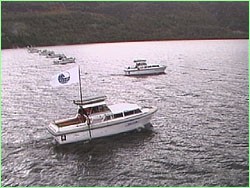
Even more interesting was the group formed to formally investigate these mysterious happenings, the LNPIB or the Loch Ness Pheneomena Investigation Bureau, which began experiments with a prototype sonar transducer with a maximum range of 800 meters. The device was fixed underwater at Temple Pier in Urquarht Bay. Directed to the opposite shore it formed a sort of acoustic net through which no moving creature could pass undetected. Amazingly enough, during the two-week trial in August of 1968, many living "targets" of at least 20 feet in length were recorded coming up towards the surface and diving back down to the depths of the loch. The LNIPB (comprised of volunteers and professionals from many fields) reported that "the objects are clearly animals"...and that "the high rate of ascent and descent makes it seem very unlikely that they could be fish, and fishery biologists we have consulted cannot suggest what fish they might be. It is a temptation to suppose they might be the fabulous Loch Ness monsters, now observed for the first time in their underwater activities!"
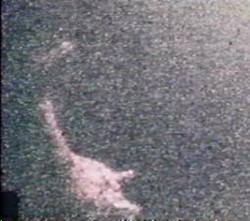
During what is now referred to as the "Big Expedition of 1970" a biologist by the name of Roy Mackal of the University of Chicago, used underwater microphones and recorded "bird-like chirps" followed by "turbulent swishing" noises from instruments secured at depths of 300 and 600 feet, although the data suggested these noises had come from even greater depths. On analysis of the sounds, Mackal stated that the sounds were made by "no known form of life in the loch", nor indeed did any of the known animals have the capabilities of producing such calls. The calls' intensities were greatest at depths less than 100 feet, and when craft passed by, the noises stopped. From 1972 to 2001 a group of people led by Robert Rines, a lawyer with a background in physcis, finally obtained some photographs. Although the photographs were fuzzy, some claimed to see a diamond shaped fin and famed naturalist Sir Peter Scott named the monster Nessiteras Rhombopteryx, for its rhomboid-shaped fin. However, it seems as if this photograph may have been enhanced.
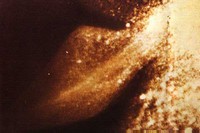
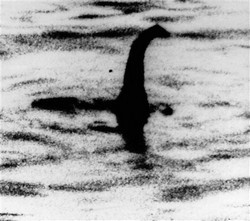
So what is the conclusion and more importantly, what sort of a creature, if it exists, is the Loch Ness Monster? Many candidates have been put forward as possibilities. 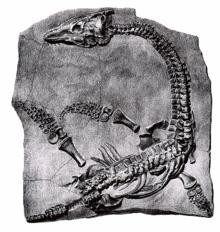
but the debate continues... 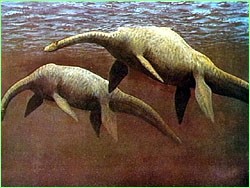
Other explanations include wakes, the extraordinary effects of the wind on the long narrow lake, rippling effects, otters, swimming deer,or even giant sturgeons.
When you visit Loch Ness, you will have the opportunity to see the evidence for yourself. Many cruise boats are available to take you on the loch. Even if you never spot Nessie, Loch Ness is another beautiful and mysterious part of Scotland, that you will never forget. By the way, the only island on the loch is Cherry Island which is actually a crannog or an artificial island, constructed during the Iron Age,. The Official exhibition is on the shores of Loch Ness at Drumnadrochit. Go to www.loch-ness.org for all the latest information about the continuing story of one of Scotland's most famous legends..
|
